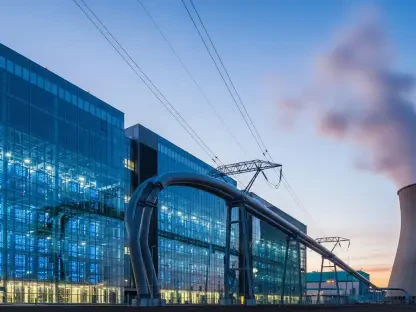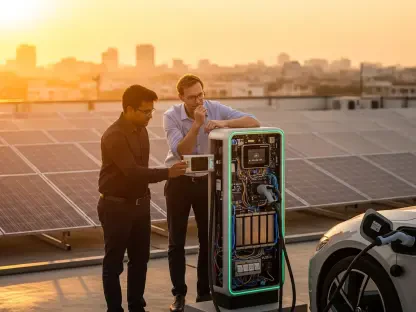Improving energy efficiency in buildings is a critical step towards achieving net-zero greenhouse gas emissions. However, it is equally important to ensure that these improvements do not compromise indoor air quality. The National Engineering Policy Centre (NEPC) has highlighted the need for a balanced approach that integrates health outcomes into energy efficiency measures. This article explores the key points from the NEPC report and the importance of maintaining good indoor air quality while enhancing energy efficiency.
The Importance of a Holistic Approach to Building Standards
Professor Cath Noakes from the University of Leeds emphasizes the need for a holistic approach to building standards. This approach should integrate health outcomes into the design, management, and operation of buildings. By embedding health considerations into building standards now, we can prevent future generations from being subjected to poor indoor environments due to the long lifespan of buildings. Indoor air quality is crucial for health and well-being. Poor indoor air quality can lead to significant health risks, particularly for vulnerable groups such as children and the elderly. The NEPC report stresses that retrofitting buildings with energy efficiency measures must simultaneously enhance ventilation to ensure healthier indoor environments.
An important aspect of holistic building standards is acknowledging the interdependence between various building elements. Incorporating insulation and airtightness should not be done at the expense of adequate ventilation. Structural upgrades like better windows and upgraded insulation should be paired with ventilation improvements to avoid problems like moisture and pollutant build-up. This balanced approach ensures that energy efficiency gains do not lead to unintended health consequences. A lack of proper ventilation can exacerbate issues such as dampness and mold, posing significant health risks and reducing the overall benefits of energy-efficient refurbishments.
Achieving Net Zero Targets Without Compromising Health
The UK’s ambitious goal of achieving net-zero greenhouse gas emissions by 2050 implies significant retrofit activities. Existing buildings contribute substantially to national emissions, and with four out of five buildings projected to be in use by 2050, making them energy-efficient while maintaining good air quality is essential. The government’s Warm Homes Plan is seen as an opportunity to integrate health outcomes into energy efficiency efforts. The plan focuses on insulation, airtightness, ventilation, air cleaning, and low-carbon heating, aiming to future-proof buildings while reducing energy consumption.
Achieving these net zero targets requires a coordinated effort among various stakeholders, including policymakers, engineers, and building operators. The NEPC report highlights the importance of considering the long-term health implications of energy efficiency measures to ensure that buildings remain healthy environments for their occupants. By integrating health outcomes in the planning and execution stages of retrofit projects, we can create a more sustainable future that is both energy-efficient and conducive to human health. Well-planned retrofits should accommodate the dual goals of reducing energy consumption and promoting healthy indoor air quality to maximize the benefits for both the environment and public health.
Addressing Health Risks in Poorly Ventilated Buildings
Poorly executed retrofits can lead to a range of issues, such as reduced natural light, increased noise pollution, dampness, and mold growth. These conditions can cause respiratory diseases and other health problems. The NEPC report notes that around two million people in England live in homes plagued by dampness and mold, highlighting the urgent need for well-planned retrofits. Improving indoor air quality through ventilation and insulation can lower energy costs, reduce illness, and lessen the burden on healthcare systems. This contributes to economic productivity and public health, making it a win-win situation for both the environment and society.
The NEPC report underscores that retrofitting activities should not be conducted in a vacuum but rather consider all interconnected elements within the building environment. For example, ensuring proper ventilation goes beyond mere window upgrades; it necessitates an in-depth understanding of airflow dynamics within the entire structure. When retrofits are thoughtfully designed and implemented, the dual benefits of improved energy efficiency and better indoor air quality can be achieved. This approach reduces the likelihood of creating health hazards and ensures that buildings remain comfortable and safe for occupants. Policymakers and industry professionals must prioritize and practice advanced planning and precision in execution.
Recommendations for Policy and Practice
The NEPC report offers five key recommendations to embed health outcomes into retrofit programs. First, it suggests incorporating health outcomes into retrofits, supported by public information campaigns. Second, it recommends conducting large-scale assessments of health risks in public buildings to inform retrofit processes. Third, the report advocates for implementing digital records for building performance and maintenance to support long-term management. Fourth, it emphasizes the need for training and skills development, including health considerations in training for retrofit professionals. Finally, it calls for research and development to address gaps in knowledge regarding the long-term health impacts of indoor environments and integrate findings into policy.
These recommendations aim to create an environment that fosters both energy efficiency and good health outcomes. The inclusion of health-based outcomes in retrofits ensures that energy-saving measures do not come at the expense of occupant well-being. Digital records provide a comprehensive view of a building’s performance and maintenance history, making it easier to identify areas needing improvement. Conducting assessments of public buildings helps to pinpoint specific health risks, guiding better retrofit designs. Additionally, training for professionals ensures that they are well-equipped to implement retrofits that balance energy efficiency with indoor air quality longevity. Addressing gaps in knowledge through dedicated research connects future policies with solid empirical data.
The Need for a Holistic Retrofit Approach
The report advocates for a balanced approach in retrofitting buildings, where insulation and airtightness do not undermine ventilation. Structural changes such as better windows and insulation should be coupled with appropriate ventilation to prevent issues like moisture and pollutant build-up. There is a need for improved standards and training for professionals involved in building retrofits to ensure they create healthy indoor environments. Professor Peter Guthrie highlights the importance of setting clear definitions and targets for healthy buildings and training professionals in the art and science of achieving these standards.
Incorporating health considerations into retrofit plans is vital for creating healthier indoor environments. Establishing clear standards and providing comprehensive training for retrofit professionals helps ensure that buildings are both energy-efficient and healthy for their occupants. This approach creates a skilled workforce capable of implementing solutions that balance energy savings with good indoor air quality. Retrofitting practices must evolve to accommodate the latest health and safety standards, ensuring that future buildings are well-equipped to provide safe and comfortable living and working spaces. By adopting a holistic approach to retrofitting, we can strike a balance between energy efficiency and occupant health, benefiting both the environment and society at large.
Global Perspective on Indoor Air Quality
Improving energy efficiency in buildings is crucial for reaching net-zero greenhouse gas emissions. However, it’s vital that these enhancements don’t jeopardize indoor air quality. The National Engineering Policy Centre (NEPC) underscores the necessity of a balanced approach that includes health outcomes as part of energy efficiency measures. This article delves into the significant findings from the NEPC report and stresses the importance of keeping indoor air quality at high standards while working on energy efficiency improvements.
The NEPC stresses that while energy efficiency in buildings can significantly reduce carbon footprints, we must not overlook the potential health implications. Poor indoor air quality can lead to respiratory issues, allergies, and other health problems. Thus, it’s essential to incorporate technologies and design principles that both save energy and ensure clean, healthy indoor environments. Taking a holistic approach, engineers and policymakers can develop solutions that help combat climate change while safeguarding public health. Balancing these objectives will be key to sustainable development in the built environment.









